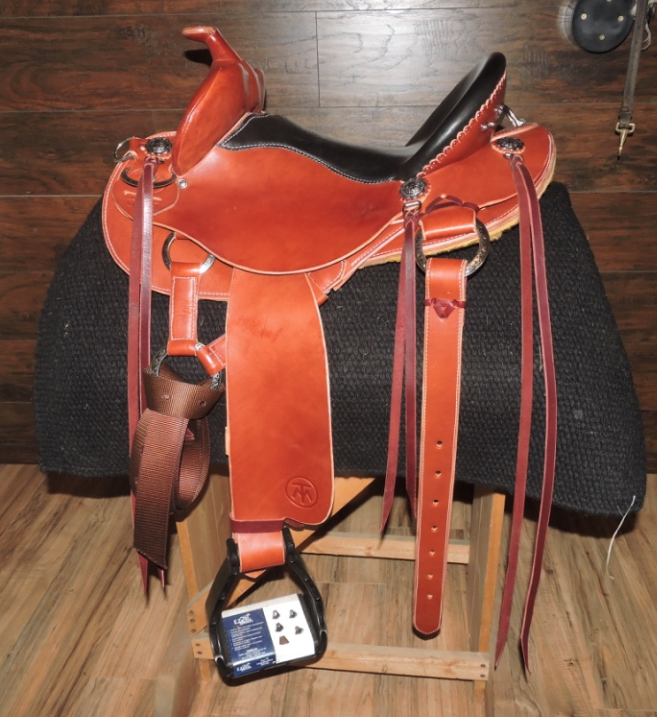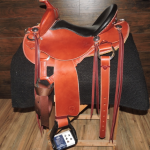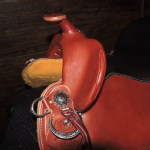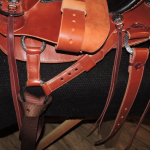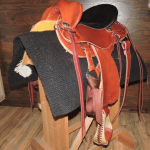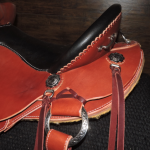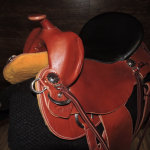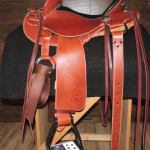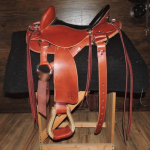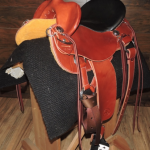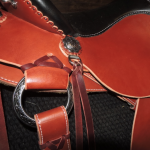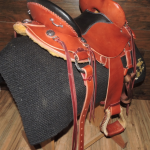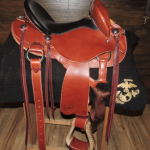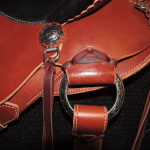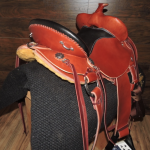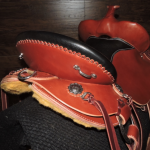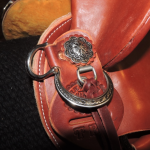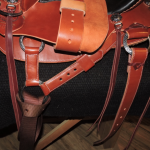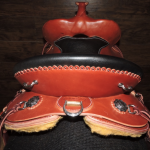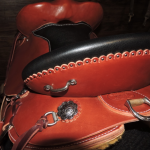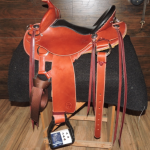 I’m a pretty fortunate guy. Every day I’m able to help thousands of people find new places to ride and camp with their horses and mules. I’m a clinician at equine events around the country. I’m privileged to be able to share my thoughts on trail riding in the best equine publications available. And I have a saddle named after me; The TrailMeister.
I’m a pretty fortunate guy. Every day I’m able to help thousands of people find new places to ride and camp with their horses and mules. I’m a clinician at equine events around the country. I’m privileged to be able to share my thoughts on trail riding in the best equine publications available. And I have a saddle named after me; The TrailMeister.
When I was initially approached about designing a trail saddle I was ecstatic. The hard work started once my head again fit my hat. I had rarely thought about the design and construction of a saddle let alone helped create one from scratch. Thankfully, I have some excellent mentors who helped me through the process; Terry Wagner of Three Bells Mules, and Ed Haefliger. Although these two individuals are both terribly bad influences and regularly cause me some amount of grief when I mention some new “need” to my wife, they are simply the best resources one can have when it comes to things in the realm of saddles and saddle fit. This is the story of how Terry and Ed helped me to create a rig that I’m proud to have my name on and how they educated me in the process.
- Full view showing endurance stirrups
- Lead rope ring
- Adjustable rigging
- Hornless model with bell stirrups
- Jeremiah Watt rear cinch ring and footman loops
- Front view of poleys
- Nylon latigo to reduce weight and bulk
- Hornless model profile view
- Faux sheepskin lining to reduce weight
- Jeremiah Watt hardware throughout
- Rear view of hornless model
- Profile view of hornless model
- More of Jeremiah Watt hardware
- Rear view of horn model
- Rear view showing spinal relief channel
- Jeremiah Watt hardware adds flair
- Adjustable Rigging
- Spinal relief channel and rollover cantle
- Close up of roll over cantle
- Another glorious photo of the TrailMeister saddle
One of the first lessons presented to me was what type of saddle to build. I have to say I don’t think Terry was expecting me say that I was fan of Australian style saddles. Having been introduced to the equine world through the English dominated world of therapy centers moving to an Aussy style was an easy route for me when I left the confines of the arena for the freedom of the trails. That being said I’ve always found the rigging of English and Australian saddles to be a pain in the rear and jumped at the chance to help create a saddle that combined the security of an Aussy with the functionality of a real western rig. I’m glad that Terry is into mules because we certainly created a hybrid.

Once it was decided that we’d be building a hybrid saddle that carries the best features, and chromosomes, of both the Australian and it’s western US cousin the next point to ponder was the tree. To my mind the tree is the spine of the saddle. Without a healthy spine you’ve got no support and big problems. It’s been said that it’s impossible to have a good saddle on a bad tree and I think that’s a fair statement. On the TrailMeister saddle there are 36 different combinations of tree shape and widths available I think it’s a good bet that Terry will be able to find the best fitting saddle for your horse or mule. The steps Terry takes during the fitting process are incredible and well worth the effort.
 Another lesson I had to learn was the best way to connect the saddle to the cinch that will hold it on your horse. Of course that’s the job of the rigging. How a saddle is rigged goes far beyond keeping your saddle on your animal. Saddle rigging will affect how your saddle fits your horse, how you sit in the saddle, and even how well you’ll perform on the trail. Suffice it to say that rigging is far more important than most give it credit.
Another lesson I had to learn was the best way to connect the saddle to the cinch that will hold it on your horse. Of course that’s the job of the rigging. How a saddle is rigged goes far beyond keeping your saddle on your animal. Saddle rigging will affect how your saddle fits your horse, how you sit in the saddle, and even how well you’ll perform on the trail. Suffice it to say that rigging is far more important than most give it credit.
At its heart how a saddle is rigged will determine where the pressure from the cinch will be translated onto your horses back.
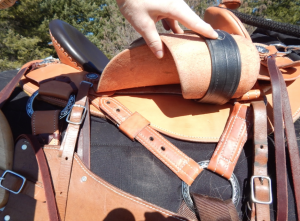 In-skirt, single, full, 7/8, ¾, and more, the options for saddle riggings are many, varied, and can be very confusing. Heaven knows it was to me. In order to accommodate the greatest number of options we went with an adjustable rigging system.
In-skirt, single, full, 7/8, ¾, and more, the options for saddle riggings are many, varied, and can be very confusing. Heaven knows it was to me. In order to accommodate the greatest number of options we went with an adjustable rigging system.
For the TrailMeister saddle I chose to incorporate heavy-duty drop type rigging attaches to the saddle’s tree with nylon latigos to reduce the bulk under the rider’s thighs. Nylon latigos offer many advantages over “traditional” leather. Nylon doesn’t rot, stretch, or get slippery when wet. While it may not be as “pretty” as leather, I opted for function first with the saddle that bears my name.
For more information on the TrailMeister saddle visit Terry’s website at https://tbmsaddles.com or email him at threebellsmules@gmail.com


